General, Sir John Monash, Personal Files Book 18, 8 May - 25 May 1918, Part 3
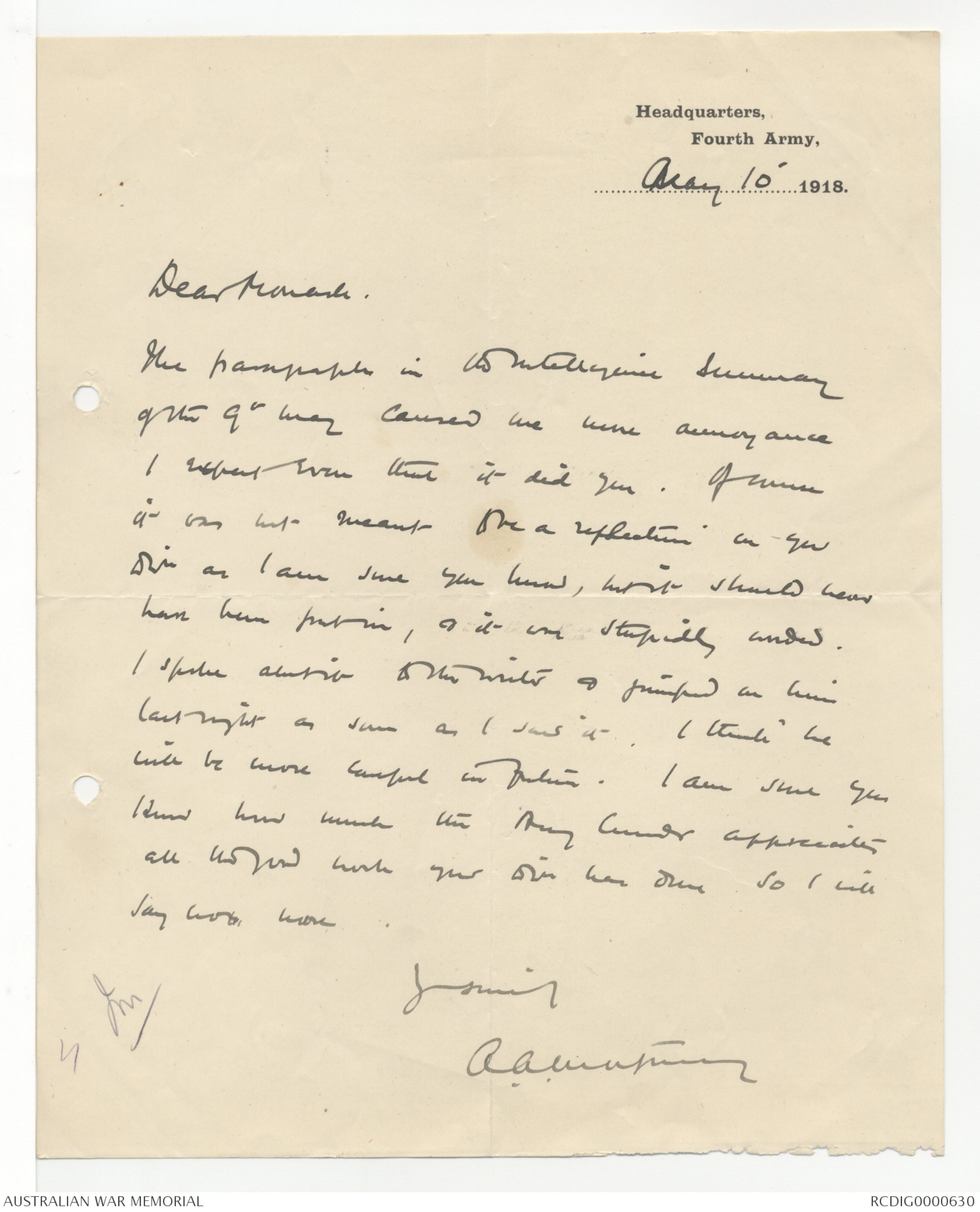
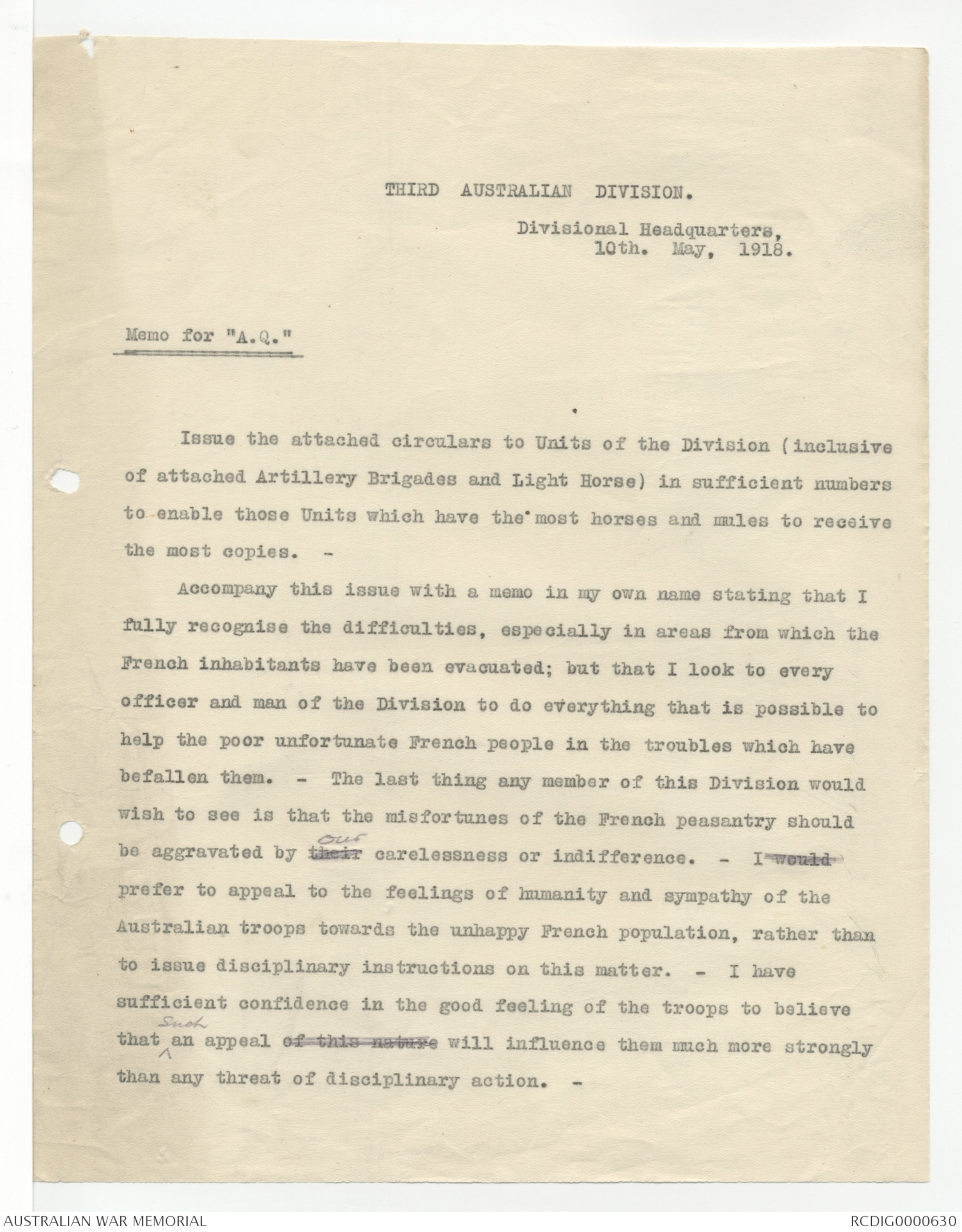
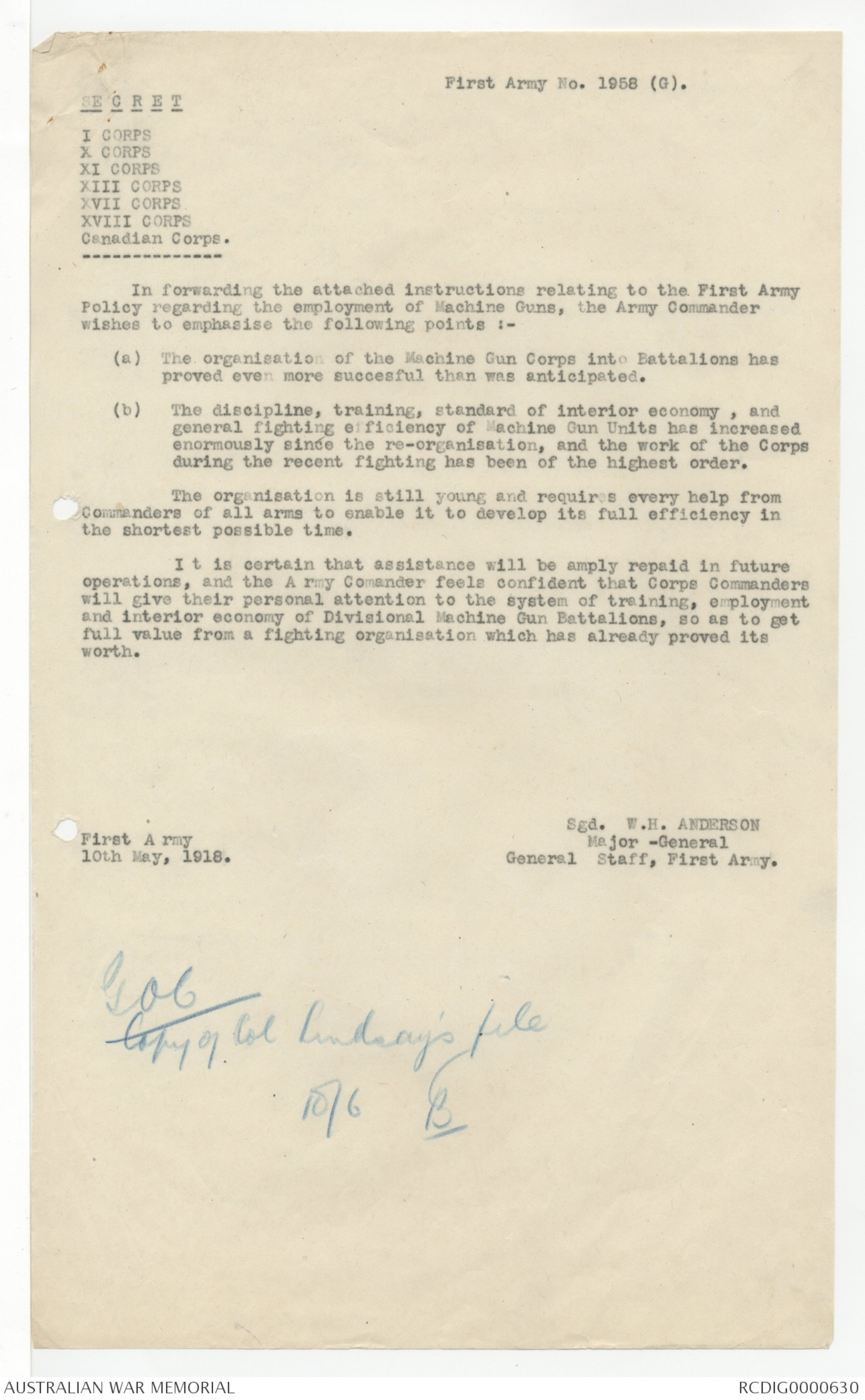
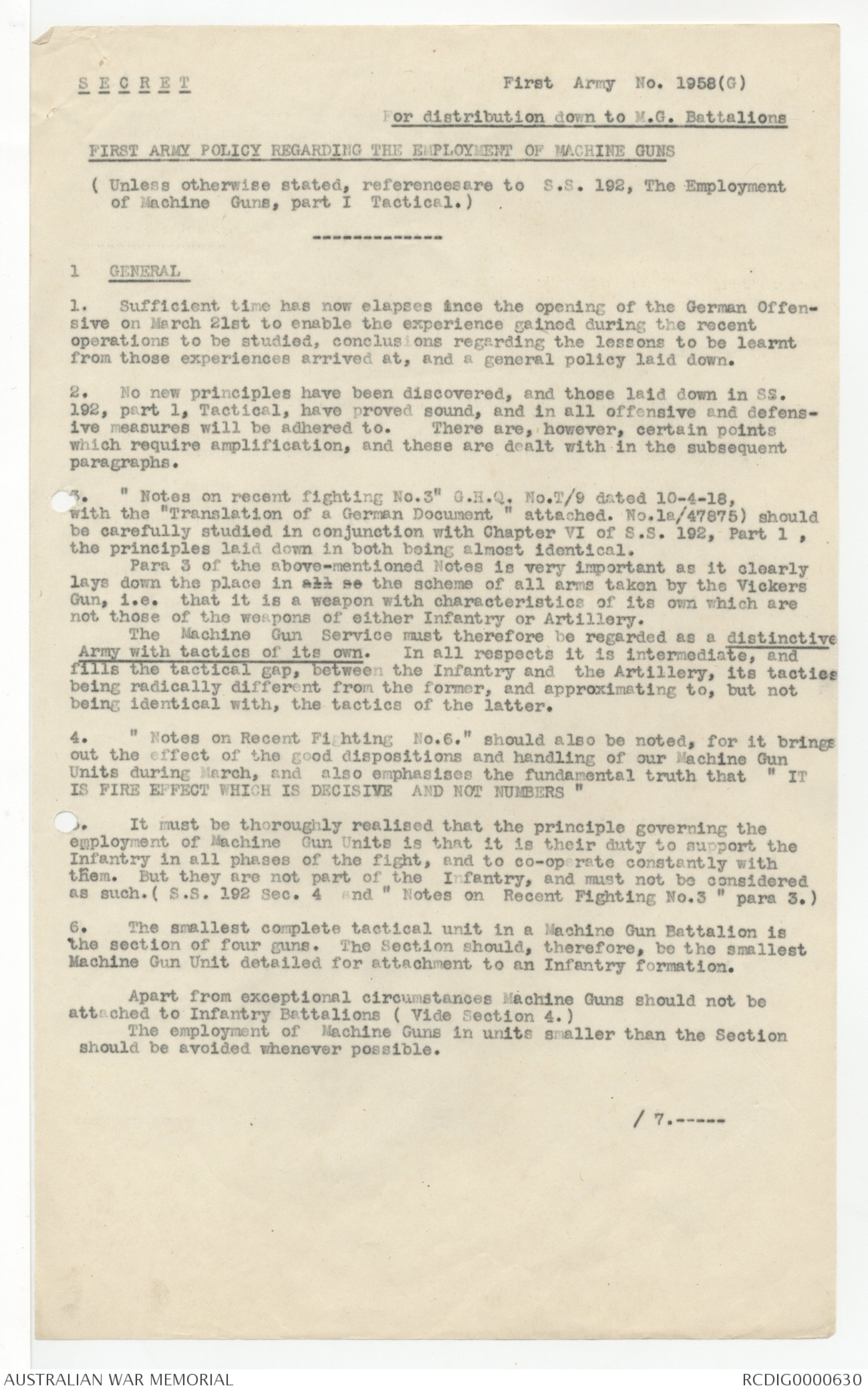
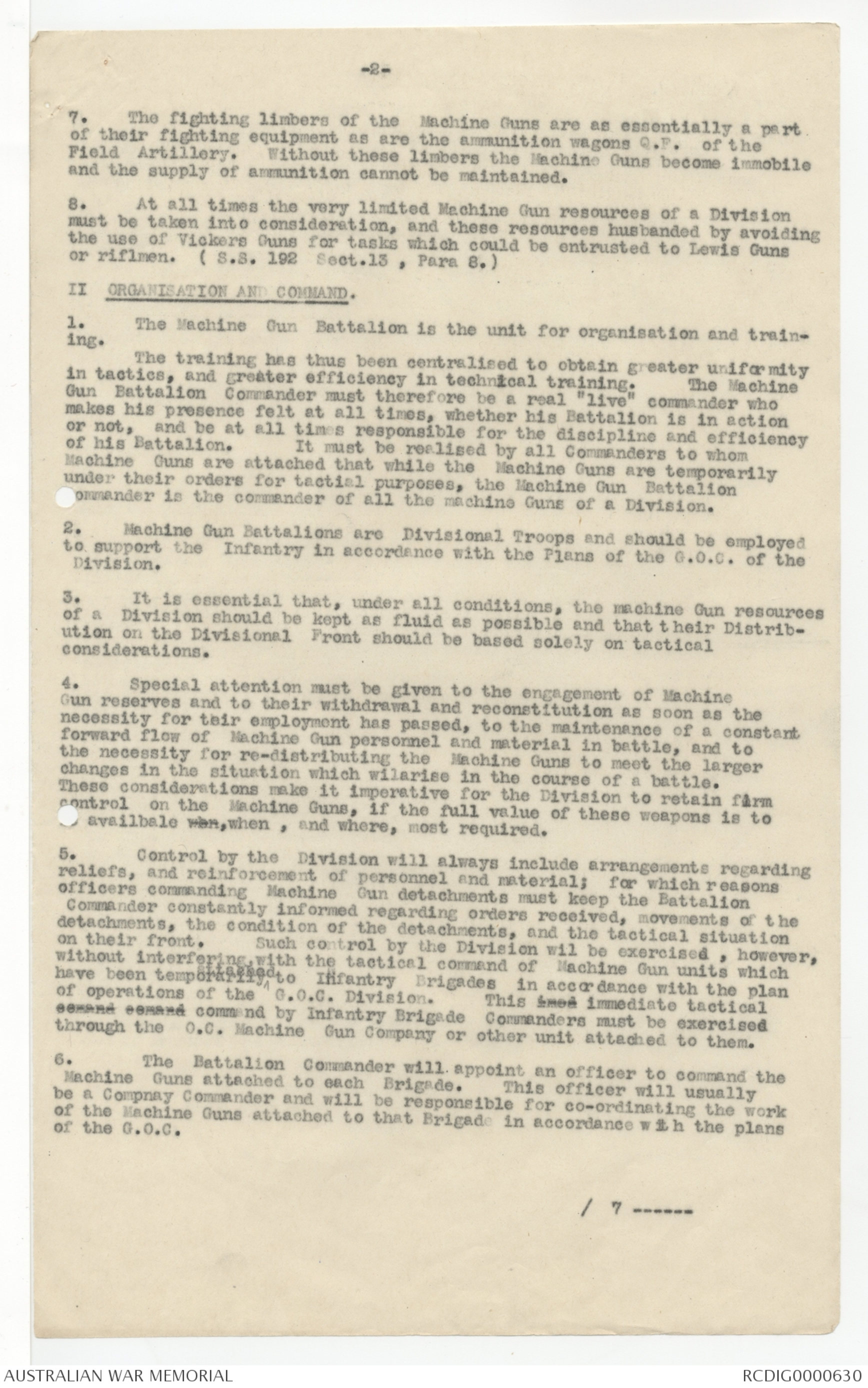
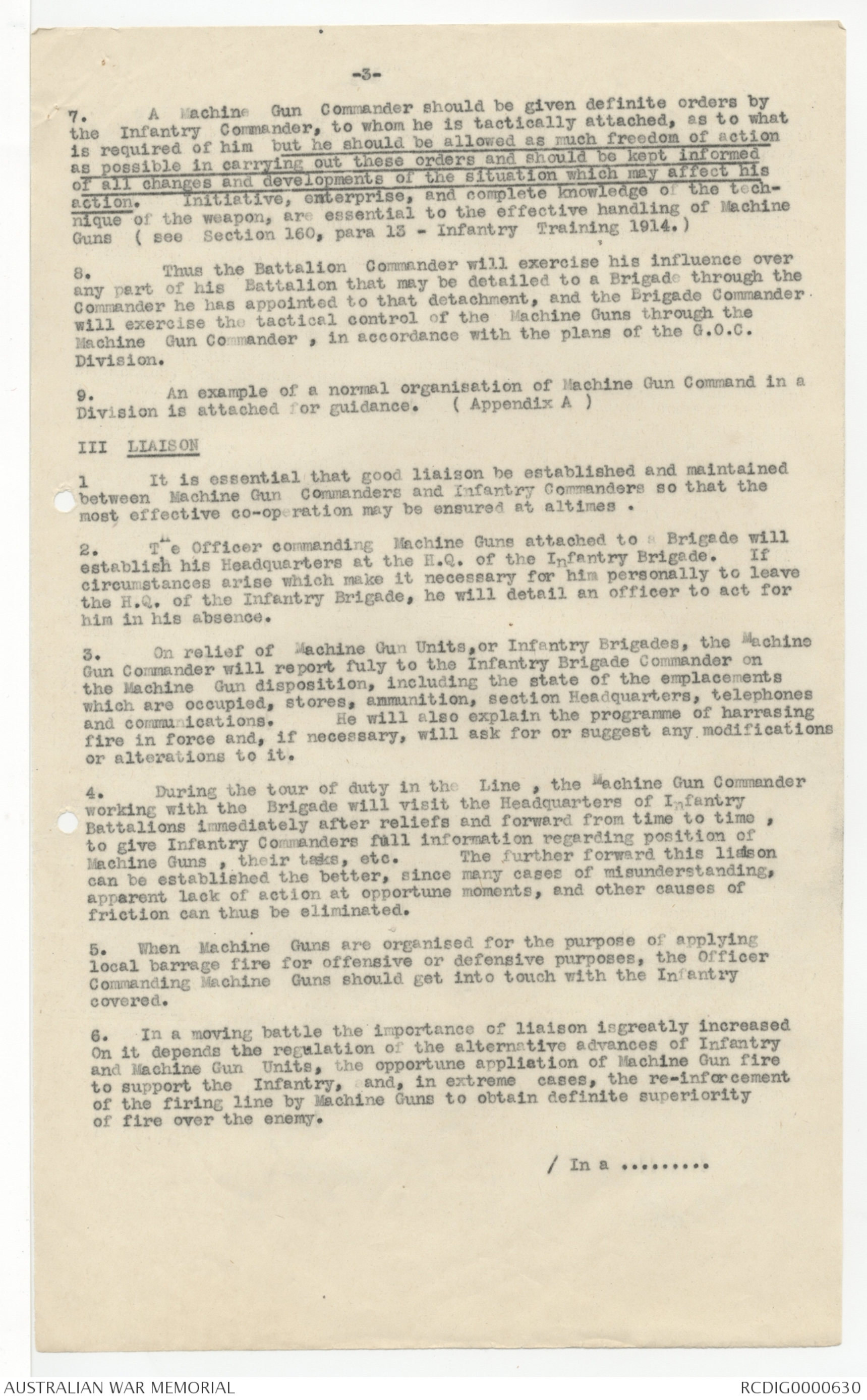
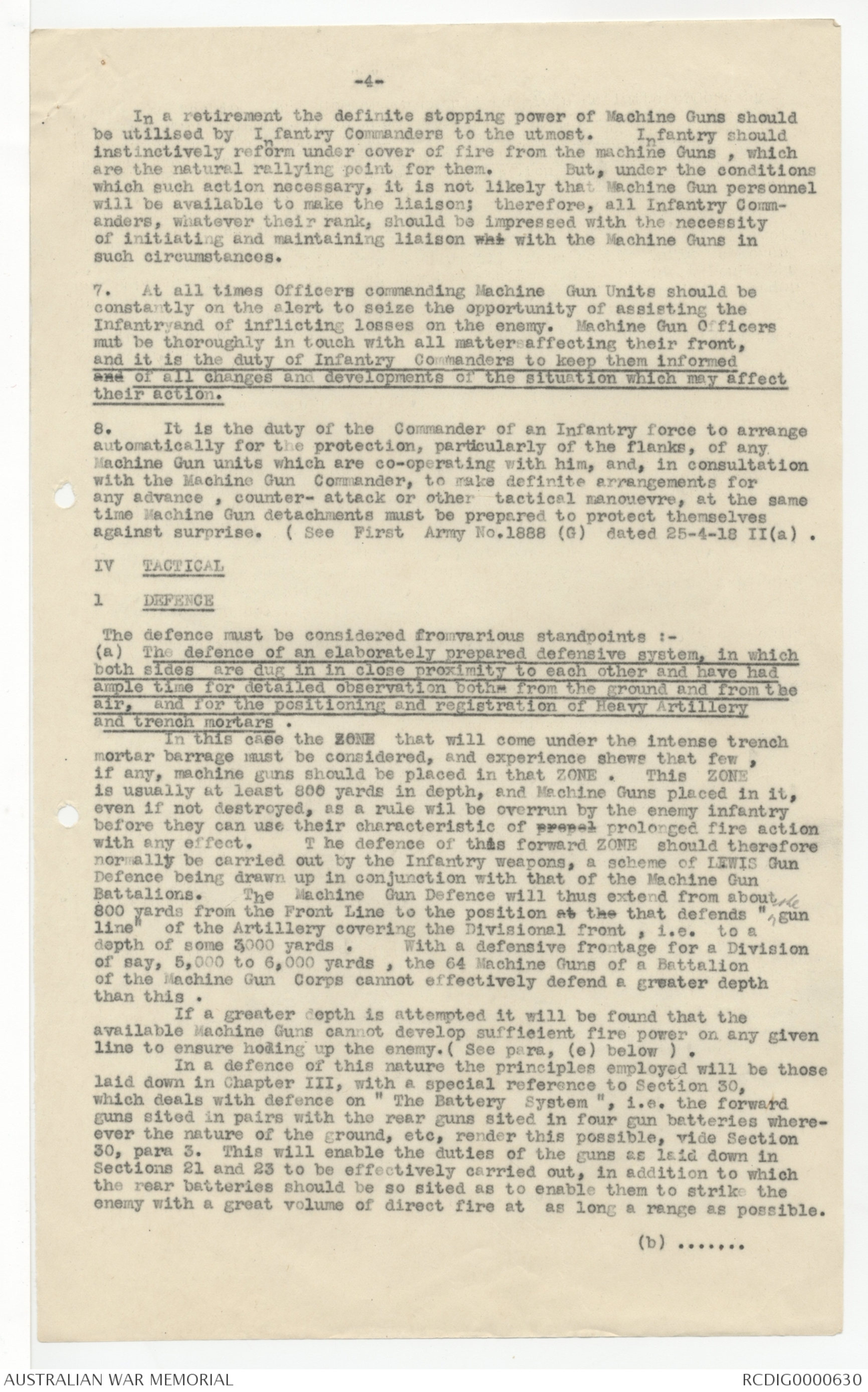
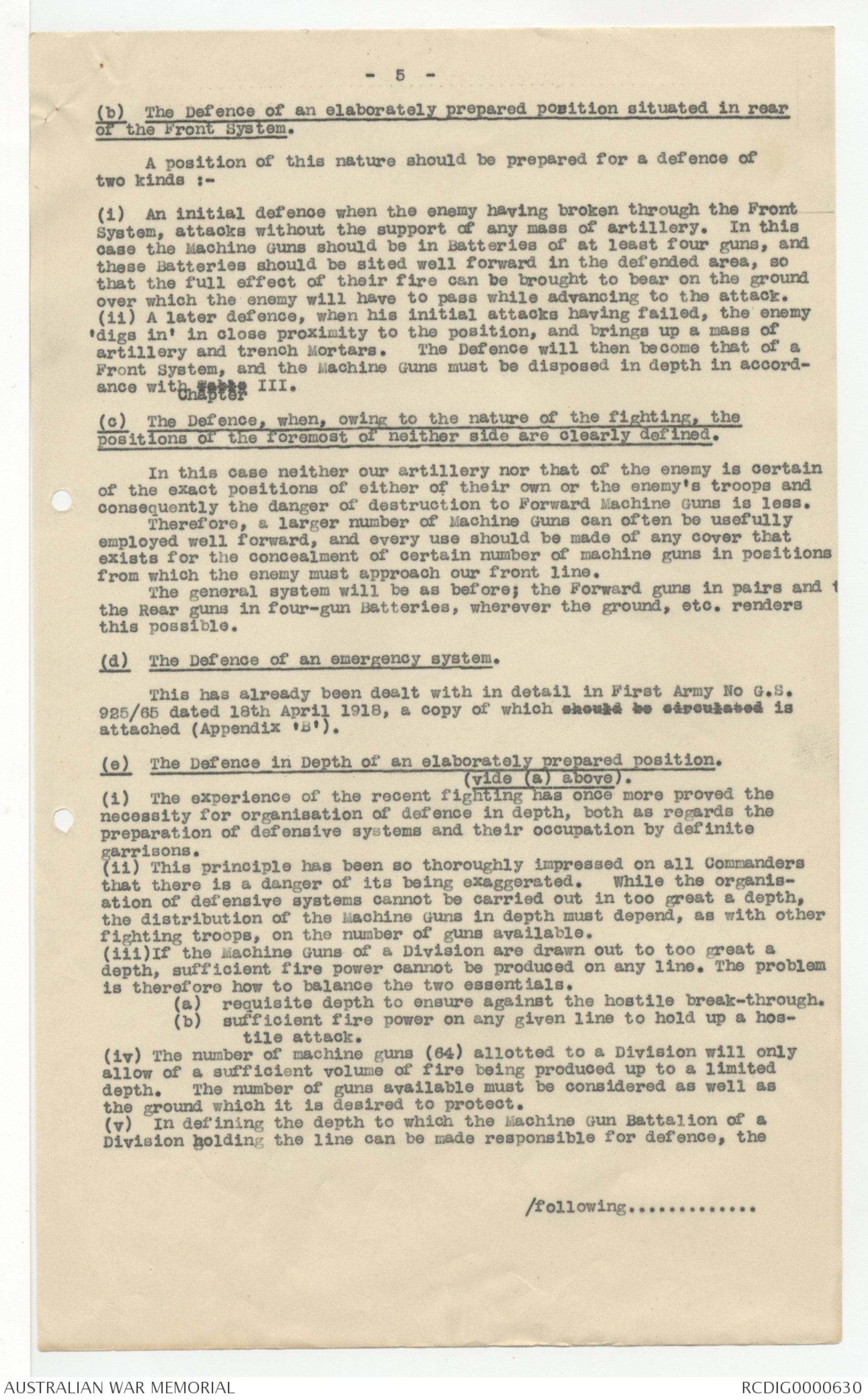
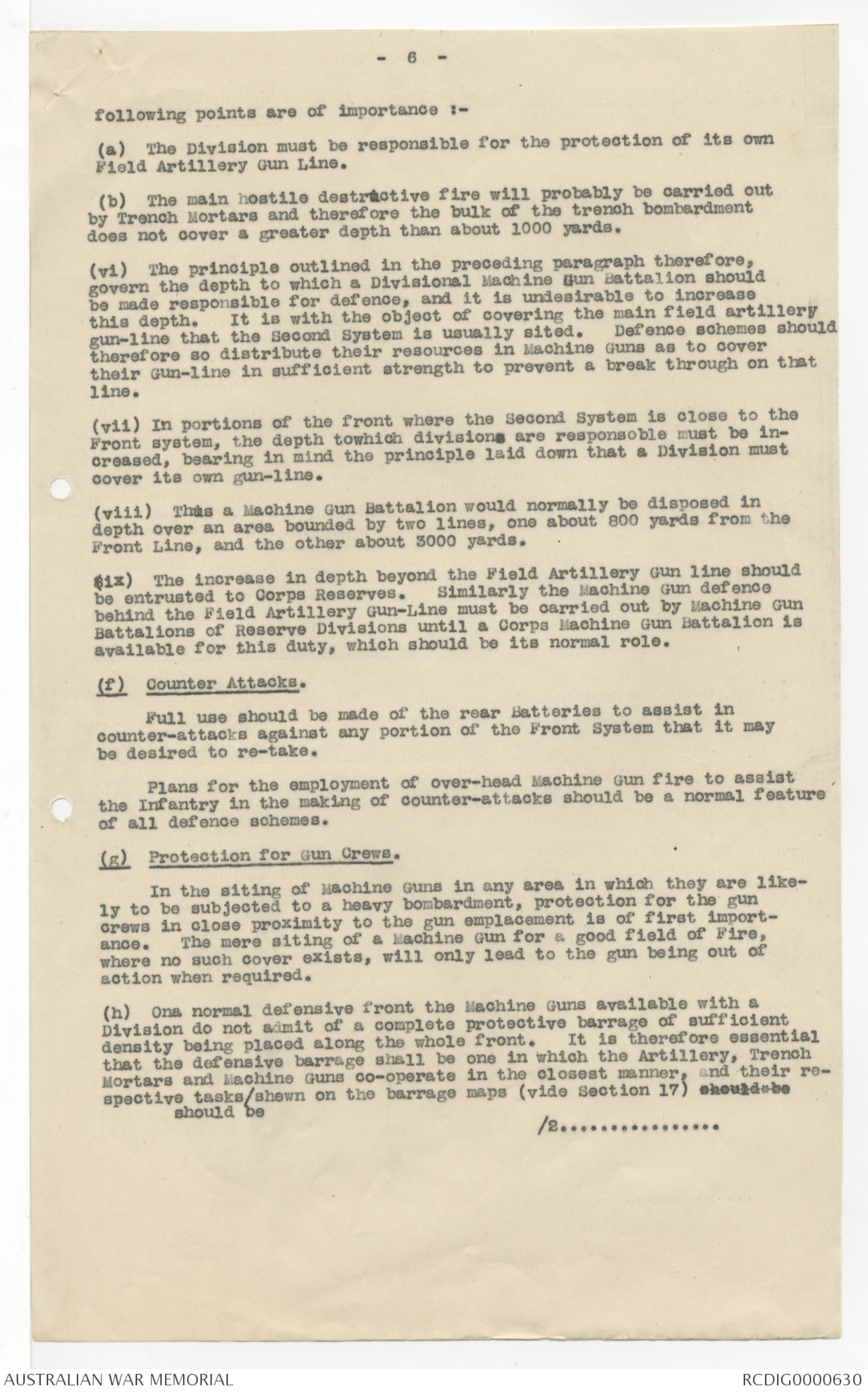
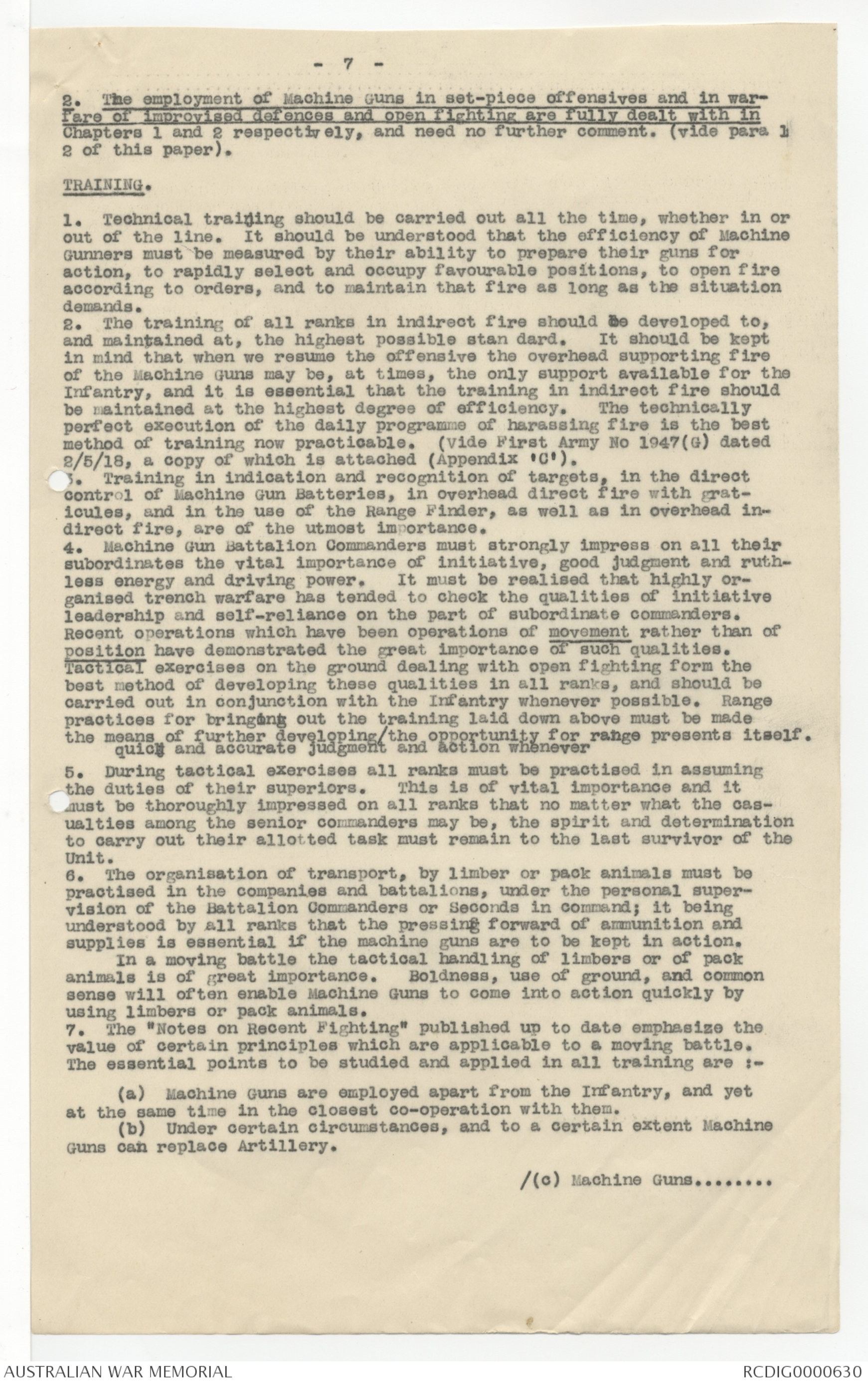
Headquarters,
Fourth Army,
May 10' 1918.
Dear Monash,
The paragraph in the Intelligence Summary
of the 9th May caused me some annoyance
I expect even that it did you. Of course
it was not meant to be a reflection on your
Divn as I am sure you know, but it should never
have been public, & it was stupidly worded.
I spoke about it to the writer & jumped on him
last night as soon as I saw it. I think he
will be more careful in future. I am sure you
know how much the Army Commdr appreciates
all the good work your Divn has done so I will
say no more.
Sincerely,
A.A. Montgomery
JM
THIRD AUSTRALIAN DIVISION.
Divisional Headquarters,
l0th. May, 1918.
Memo for "A.Q."
Issue the attached circulars to Units of the Division (inclusive
of attached Artillery Brigades and Light Horse) in sufficient numbers
to enable those Units which have the most horses and mules to receive
the most copies.-
Accompany this issue with a memo in my own name stating that I
fully recognise the difficulties, especially in areas from which the
French inhabitants have been evacuated; but that I look to every
officer and man of the Division to do everything that is possible to
help the poor unfortunate French people in the troubles which have
befallen them. - The last thing any member of this Division would
wish to see is that the misfortunes of the French peasantry should
be aggravated by their ∧ our carelessness or indifference. - I would
prefer to appeal to the feelings of humanity and sympathy of the
Australian troops towards the unhappy French population, rather than
to issue disciplinary instructions on this matter. - I have
sufficient confidence in the good feeling of the troops to believe
that ∧ such an appeal of this nature will influence them much more strongly
than any threat of disciplinary action. -
First Army No. 1958 ( G ).
SECRET
I CORPS
X CORPS
XI CORPS
XIII CORPS
XVII CORPS
XVIII CORPS
Canadian Corps.
-------------------------
In forwarding the attached instructions relating to the First Army
Policy regarding the employment of Machine Guns, the Army Commander
wishes to emphasise the following points :¬
(a) The organisation of the Machine Gun Corps into Battalions has
proved even more succesful than was anticipated.
(b) The discipline, training, standard of interior economy, and
general fighting efficiency of Machine Gun Units has increased
enormously since the re-organisation, and the work of the Corps
during the recent fighting has been of the highest order.
The organisation is still young and requires every help from
Commanders of all arms to enable it to develop its full efficiency in
the shortest possible time.
It is certain that assistance will be amply repaid in future
operations, and the Army Comander feels confident that Corps Commanders
will give their personal attention to the system of training, employment
and interior economy of Divisional Machine Gun Battalions, so as to get
full value from a fighting organisation which has already proved its
worth.
Sgd. W.H. ANDERSON
Major -General
General Staff, First Army.
First Army
10th May, 1918.
[*GOC
Copy of Col Lindsay's file
10/6 B *]
First Army No. 1958 ( G )
SECRET
For distribution down to M.G. Battalions
FIRST ARMY POLICY REGARDING THE
EMPLOYMENT OF MACHINE GUNS
(Unless otherwise stated, references are to
S.S. 192, The Employment
of Machine Guns, part I Tactical.)
-------------------------
1 GENERAL
1. Sufficient time has now elapses ince the opening of the German Offensive
on March 21st to enable the experience gained during the recent
operations to be studied, conclusions regarding the lessons to be learnt
from those experiences arrived at, and a general policy laid down.
2. No new principles have been discovered, and those laid down in
SS. 192, part 1, Tactical, have proved sound, and in all offensive and defensive
measures will be adhered to. There are, however, certain points
which require amplification, and these are dealt with in the subsequent
paragraphs.
3. " Notes on recent fighting No.3" G.H.Q. No.T/9 dated 10-4-18,
with the "Translation of a German Document " attached. No. la/47875) should
be carefully studied in conjunction with Chapter VI of S.S. 192, Part 1,
the principles laid down in both being almost identical.
Para 3 of the above-mentioned Notes is very important as it clearly
lays down the place in all so the scheme of all arms taken by the Vickers
Gun, i.e. that it is a weapon with characteristics of its own which are
not those of the weapons of either Infantry or Artillery.
The Machine Gun Service must therefore be regarded as a distinctive
Army with tactics of its own. In all respects it is intermediate, and
fills the tactical gap, between the Infantry and the Artillery, its tactics
being radically different from the former, and approximating to, but not
being identical with, the tactics of the latter.
4. " Notes on Recent Fighting No.6." should also be noted, for it brings
out the effect of the good dispositions and handling of our Machine Gun
Units during March, and also emphasises the fundamental truth that "IT
IS FIRE EFFECT WHICH IS DECISIVE AND NOT NUMBERS"
5. It must be thoroughly realised that the principle governing the
employment of Machine Gun Units is that it is their duty to support the
Infantry in all phases of the fight, and to
co-operate constantly with
them. But they are not part of the Infantry, and must not be considered
as such. (S.S. 192 Sec. 4 and " Notes on Recent Fighting No.3" para 3.)
6. The smallest complete tactical unit in a Machine Gun Battalion is
the section of four guns. The Section should, therefore, be the smallest
Machine Gun Unit detailed for attachment to an Infantry formation.
Apart from exceptional circumstances Machine Guns should not be
attached to Infantry Battalions (Vide Section 4.)
The employment of Machine Guns in units smaller than the Section
should be avoided whenever possible.
/7.----
- 2 -
7. The fighting limbers of the Machine Guns are as essentially a part
of their fighting equipment as are the ammunition wagons G.F. of the
Field Artillery. Without these limbers the Machine Guns become immobile
and the supply of ammunition cannot be maintained.
8. At all times the very limited Machine Gun resources of a Division
must be taken into consideration, and these resources husbanded by avoiding
the use of Vickers Guns for tasks which could be entrusted to Lewis Guns
or riflmen. (S.S. 192 Sect.13, Para 8.)
II ORGANISATION AND COMMAND.
1. The Machine Gun Battalion is the unit for organisation and training.
The training has thus been centralised to obtain greater uniformity
in tactics, and greater efficiency in technical training. The Machine
Gun Battalion Commander must therefore be a real "live" commander who
makes his presence felt at all times, whether his Battalion is in action
or not, and be at all times responsible for the discipline and efficieney
of his Battalion. It must be realised by all Commanders to whom
Machine Guns are attached that while the Machine Guns are temporarily
under their orders for tactial purposes, the Machine Gun Battalion
Commander is the commander of all the machine Guns of a Division.
2. Machine Gun Battalions are Divisional Troops and should be employed
to support the Infantry in accordance with the Plans of the G.O.C. of the
Division.
3. It is essential that, under all conditions, the machine Gun resources
of a Division should be kept as fluid as possible and that their Distribution
on the Divisional Front should be based solely on tactical
considerations.
4. Special attention must be given to the engagement of Machine
Gun reserves and to their withdrawal and reconstitution as soon as the
necessity for teir employment has passed, to the maintenance of a constant
forward flow of Machine Gun personnel and material in battle, and to
the necessity for re-distributing the Machine Guns to meet the larger
changes in the situation which wilarise in the course of a battle.
These considerations make it imperative for the Division to retain firm
control on the Machine Guns, if the full value of these weapons is to
be available wen, when, and where, most required.
5. Control by the Division will always include arrangements regarding
reliefs, and reinforcement of personnel and material; for which reasons
officers commanding Machine Gun detachments must keep the Battalion
Commander constantly informed regarding orders received, movements of the
detachments, the condition of the detachments, and the tactical situation
on their front. Such control by the Division wil be exercised, however,
without interfering.with the tactical command of Machine Gun units which
have been temporarily ∧ attached to Infantry Brigades in accordance with the plan
of operations of the G.O.C. Division. This xxxx immediate tacticalcomand comand command by Infantry Brigade Commanders must be exercised
through the O.C. Machine Gun Company or other unit attached to them.
6. The Battalion Commander will appoint an officer to command the
Machine Guns attached to each Brigade. This officer will usually
be a Compnay Commander and will be responsible for co-ordinating the work
of the Machine Guns attached to that Brigade in accordance wth the plans
of the C.O.C.
/7 ------
-3-
7. A Machine Gun Commander should be given definite orders by
the Infantry Commander, to whom he is tactically attached, as to what
is required of him but he should be allowed as much freedom of action
as possible in carrying out these orders and should be kept Informed
of aII changes and developments of the situation which may affect his
action. Initiative, enterprise, and complete knowledge of the technique
of the weapon, are essential to the effective handling of Machine
Guns (see Section 160, para 13 - Infantry Training 1914.)
8. Thus the Battalion Commander will exercise his influence over
any part of his Battalion that may be detailed to a Brigade through the
Commander he has appointed to that detachment, and the Brigade Commander
will exercise the tactical control of the Machine Guns through the
Machine Gun Commander, in accordance with the plans of the G.O.C.
Division.
9. An example of a normal organisation of Machine Gun Command in a
Division is attached for guidance. (Appendix A)
III LIAISON
1. It is essential that good liaison be established and maintained
between Machine Gun Commanders and Infantry Commanders so that the
most effective co-operation may be ensured at altimes .
2. The Officer commanding Machine Guns attached to a Brigade will
establish his Headquarters at the H.Q. of the Infantry Brigade. If
circumstances arise which make it necessary for him personally to leave
the H.Q. of the Infantry Brigade, he will detail an officer to act for
him in his absence.
3. On relief of Machine Gun Units, or Infantry Brigades, the Machine
Gun Commander will report fuly to the Infantry Brigade Commander on
the Machine Gun disposition, including the state of the emplacements
which are occupied, stores, ammunition, section Headquarters, telephones
and communications. He will also explain the programme of harrasing
fire in force and, if necessary, will ask for or suggest any modifications
or alterations to it.
4. During the tour of duty in the Line, the Machine Gun Commander
working with the Brigade will visit the Headquarters of Infantry
Battalions immediately after reliefs and forward from time to time,
to give Infantry Commanders full information regarding position of
Machine Guns, their tasks, etc. The further forward this liaison
can be established the better, since many cases of misunderstanding,
apparent lack of action at opportune moments, and other causes of
friction can thus be eliminated.
5. When Machine Guns are organised for the purpose of applying
local barrage fire for offensive or defensive purposes, the Officer
Commanding Machine Guns should get into touch with the Infantry
covered.
6. In a moving battle the importance of liaison isgreatly increased
On it depends the regulation of the alternative advances of Infantry
and Machine Gun Units, the opportune appliation of Machine Gun fire
to support the Infantry, and, in extreme cases, the re-inforcement
of the firing line by Machine Guns to obtain definite superiority
of fire over the enemy.
/In a . .........
-4-
In a retirement the definite stopping power of Machine Guns should
be utilised by Infantry Commanders to the utmost. Infantry should
instinctively reform under cover of fire from the machine Guns, which
are the natural rallying point for them. But, under the conditions
which such action necessary, it is not likely that Machine Gun personnel
will be available to make the liaison; therefore, all Infantry Commanders,
whatever their rank, should be impressed with the necessity
of initiating and maintaining liaison whi with the Machine Guns in
such circumstances.
7. At all times Officers commanding Machine Gun Units should be
constantly on the alert to seize the opportunity of assisting the
Infantry and of inflicting losses on the enemy. Machine Gun Officers
mut be thoroughly in touch with all matters affecting their front,
and it is the duty of Infantry Commanders to keep them informedand of all changes and developments of the situation which may affect
their action.
8. It is the duty of the Commander of an Infantry force to arrange
automatically for the protection, particularly of the flanks, of any
Machine Gun units which are co-operating with him, and, in consultation
with the Machine Gun Commander, to make definite arrangements for
any advance, counter- attack or other tactical manouevre, at the same
time Machine Gun detachments must be prepared to protect themselves
against surprise. (See First Army No. 1888 (G) dated 25-4-18 II(a)
IV TACTICAL
1 DEFENCE
The defence must be considered from various standpoints :¬
(a) The defence of an elaborately prepared defensive system, in which
both sides are dug in in close proximity to each other and have had
ample time for detailed observation bothe from the ground and from the
air, and for the positioning and registration of Heavy Artillery
and trench mortars.
In this case the ZONE that will come under the intense trench
mortar barrage must be considered, and experience shows that few,
if any, machine guns should be placed in that ZONE. This ZONE
is usually at least 800 yards in depth, and Machine Guns placed in it,
even if not destroyed, as a rule wil be overrun by the enemy infantry
before they can use their characteristic of propel prolonged fire action
with any effect. The defence of this forward ZONE should therefore
normally be carried out by the Infantry weapons, a scheme of LEWIS Gun
Defence being drawn up in conjunction with that of the Machine Gun
Battalions. The Machine Gun Defence will thus extend from about
800 yards from the Front Line to the position at the that defends " ∧ the gun
line" of the Artillery covering the Divisional front, i.e. to a
depth of some 3000 yards. With a defensive frontage for a Division
of say, 5,000 to 6,000 yards, the 64 Machine Guns of a Battalion
of the Machine Gun Corps cannot effectively defend a greater depth
than this.
If a greater depth is attempted it will be found that the
available Machine Guns cannot develop sufficient fire power on any given
line to ensure holding up the enemy.(See para, (e) below).
In a defence of this nature the principles employed will be those
laid down in Chapter III, with a special reference to Section 30,
which deals with defence on " The Battery System ", i.e. the forward
guns sited in pairs with the rear guns sited in four gun batteries whereever
the nature of the ground, etc, render this possible, vide Section
30, para 3. This will enable the duties of the guns as laid down in
Sections 21 and 23 to be effectively carried out, in addition to which
the rear batteries should be so sited as to enable them to strike the
enemy with a great volume of direct fire at as long a range as possible.
(b) ........
-5-
(b) The Defence of an elaborately prepared position situated in rear
of the Front System.
A position of this nature should be prepared for a defence of
two kinds :-
(i) An initial defence when the enemy having broken through the Front
System, attacks without the support of any mass of artillery. In this
case the Machine Guns should be in Batteries of at least four guns, and
these Batteries should be sited well forward in the defended area, so
that the full effect of their fire can be brought to bear on the ground
over which the enemy will have to pass while advancing to the attack.
(ii) A later defence, when his initial attacks having failed, the enemy
'digs in' in close proximity to the position, and brings up a mass of
artillery and trench Mortars. The Defence will then become that of a
Front System, and the Machine Guns must be disposed in depth in accordance
with Table ∧ Chapter III.
(c) The Defence, when, owing to the nature of the fighting, the
positions of the foremost of neither side are clearly defined.
In this case neither our artillery nor that of the enemy is certain
of the exact positions of either of their own or the enemy's troops and
consequently the danger of destruction to Forward Machine Guns is less.
Therefore, a larger number of Machine Guns can often be usefully
employed well forward, and every use should be made of any cover that
exists for the concealment of certain number of machine guns in positions
from which the enemy must approach our front line.
The general system will be as before; the Forward guns in pairs and
the Rear guns in four-gun Batteries, wherever the ground, etc. renders
this possible.
(d) The Defence of an emergency system.
This has already been dealt with in detail in First Army No G.S.
925/65 dated 18th April 1918, a copy of which should be circulated is
attached (Appendix 'B').
(e) The Defence in Depth of an elaborately prepared position.
(vide (a) above).
(i) The experience of the recent fighting has once more proved the
necessity for organisation of defence in depth, both as regards the
preparation of defensive systems and their occupation by definite
garrisons.
(ii) This principle has been so thoroughly impressed on all Commanders
that there is a danger of its being exaggerated. While the organisation
of defensive systems cannot be carried out in too great a depth,
the distribution of the Machine Guns in depth must depend, as with other
fighting troops, on the number of guns available.
(iii) If the Machine Guns of a Division are drawn out to too great a
depth, sufficient fire power cannot be produced on any line. The problem
is therefore how to belance the two essentials.
(a) requisite depth to ensure against the hostile break-through.
(b) sufficient fire power on any given line to hold up a hostile
attack.
(iv) The number of machine guns (64) allotted to a Division will only
allow of a sufficient volume of fire being produced up to a limited
depth. The number of guns available must be considered as well as
the ground which it is desired to protect.
(v) In defining the depth to which the Machine Gun Battalion of a
Division holding the line can be made responsible for defence, the
/following........
-6-
following points are of importance :-
(a) The Division must be responsible for the protection of its own
Field Artillery Gun Line.
(b) The main hostile destructive fire will probably be carried out
by Trench Mortars and therefore the bulk of the trench bombardment
does not cover a greater depth than about 1000 yards.
(vi) The principle outlined in the preceding paragraph therefore,
govern the depth to which a Divisional Machine Gun Battalion should
be made responsible for defence, and it is undesirable to increase
this depth. It is with the object of covering the main field artillery
gun-line that the Second System is usually sited. Defence schemes should
therefore so distribute their resources in Machine Guns as to cover
their gun-line in sufficient strength to prevent a break through on that
line.
(vii) In portions of the front where the Second System is close to the
Front system, the depth towhich divisions are responsoble must be increased,
bearing in mind the principle laid down that a Division must
cover its own gun-line.
(viii) This a Machine Gun Battalion would normally be disposed in
depth over an area bounded by two lines, one about 800 yards from the
Front Line, and the other about 3000 yards.
(ix) The increase in depth beyond the Field Artillery Gun line should
be entrusted to Corps Reserves. Similarly the Machine Gun defence
behind the Field Artillery Gun-Line must be carried out by Machine Gun
Battalions of Reserve Divisions until a Corps Machine Gun Battalion is
available for this duty, which should be its normal role.
(f) Counter Attacks.
Full use should be made of the rear Batteries to assist in
counter-attacks against any portion of the Front System that it may
be desired to re-take.
Plans for the employment of over-head Machine Gun fire to assist
the Infantry in the making of counter-attacks should be a normal feature
of all defence schemes.
(g) Protection for Gun Crews.
In the siting of Machine Guns in any area in which they are likely
to be subjected to a heavy bombardment, protection for the gun
crews in close proximity to the gun emplacement is of first importance.
The mere siting of a Machine Gun for a good field of Fire,
where no such cover exists, will only lead to the gun being out of
action when required.
(h) On a normal defensive front the Machine Guns available with a
Division do not admit of a complete protective barrage of sufficient
density being placed along the whole front. It is therefore essential
that the defensive barrage shall be one in which the Artillery, Trench
Mortars and Machine Guns co-operate in the closest manner, and their respective
tasks ∧ should be shown on the barrage maps (vide Section 17) should be
/2................
-7-
2. The employment of Machine Guns
in set-piece offensives and in warfare
of improvised defences and open fighting are fully dealt with in
Chapters 1 and 2 respectively, and need no further comment. (vide para 12
of this paper).
TRAINING.
1. Technical training should be carried out all the time, whether in or
out of the line. It should be understood that the efficiency of Machine
Gunners must be measured by their ability to prepare their guns for
action, to rapidly select and occupy favourable positions, to open fire
according to orders, and to maintain that fire as long as the situation
demands.
2. The training of all ranks in indirect fire should be developed to,
and maintained at, the highest possible standard. It should be kept
in mind that when we resume the offensive the overhead supporting fire
of the Machine Guns may be, at times, the only support available for the
Infantry, and it is essential that the training in indirect fire should
be maintained at the highest degree of efficiency. The technically
perfect execution of the daily programme of harassing fire is the best
method of training now practicable. (Vide First Army No 1947(G) dated
2/5/18, a copy of which is attached (Appendix 'C').
3. Training in indication and recognition of targets, in the direct
control of Machine Gun Batteries, in overhead direct fire with graticules,
and in the use of the Range Finder, as well as in overhead indirect
fire, are of the utmost importance.
4. Machine Gun Battalion Commanders must strongly impress on all their
subordinates the vital importance of initiative, good judgment and ruthless
energy and driving power. It must be realised that highly organised
trench warfare has tended to check the qualities of initiative
leadership and self-reliance on the part of subordinate commanders.
Recent operations which have been operations of movement rather than of
position have demonstrated the great importance of such qualities.
Tactical exercises on the ground dealing with open fighting form the
best method of developing these qualities in all ranks, and should be
carried out in conjunction with the Infantry whenever possible. Range
practices for bringing out the training laid down above must be made
the means of further developing ∧ quick and accurate judgment and action whenever the opportunity for range presents itself.
5. During tactical exercises all ranks must be practised in assuming
the duties of their superiors. This is of vital importance and it
must be thoroughly impressed on all ranks that no matter what the casualties
among the senior commanders may be, the spirit and determination
to carry out their allotted task must remain to the last survivor of the
Unit.
6. The organisation of transport, by limber or pack animals must be
practised in the companies and battalions, under the personal supervision
of the Battalion Commanders or Seconds in command; it being
understood by all ranks that the pressing forward of ammunition and
supplies is essential if the machine guns are to be kept in action.
In a moving battle the tactical handling of limbers or of pack
animals is of great importance. Boldness, use of ground, and common
sense will often enable Machine Guns to come into action quickly by
using limbers or pack animals.
7. The "Notes on Recent Fighting" published up to date emphasize the
value of certain principles which are applicable to a moving battle.
The essential points to be studied and applied in all training are :
(a) Machine Guns are employed apart from the Infantry, and yet
at the same time in the closest co-operation with them.
(b) Under certain circumstances, and to a certain extent Machine
Guns can replace Artillery.
/(c) Machine Guns........
 Sam scott
Sam scottThis transcription item is now locked to you for editing. To release the lock either Save your changes or Cancel.
This lock will be automatically released after 60 minutes of inactivity.